Planning a long-distance trip and worried about how to travel safely with your beloved feline companion? Look no further! In this article, we will provide you with essential tips and tricks to ensure a stress-free journey for both you and your cat. From preparing a comfortable travel carrier to familiarizing your cat with the traveling environment, we’ve got you covered. So, grab a cup of tea, sit back, and let us guide you on how to make your cat’s traveling experience as smooth as possible.
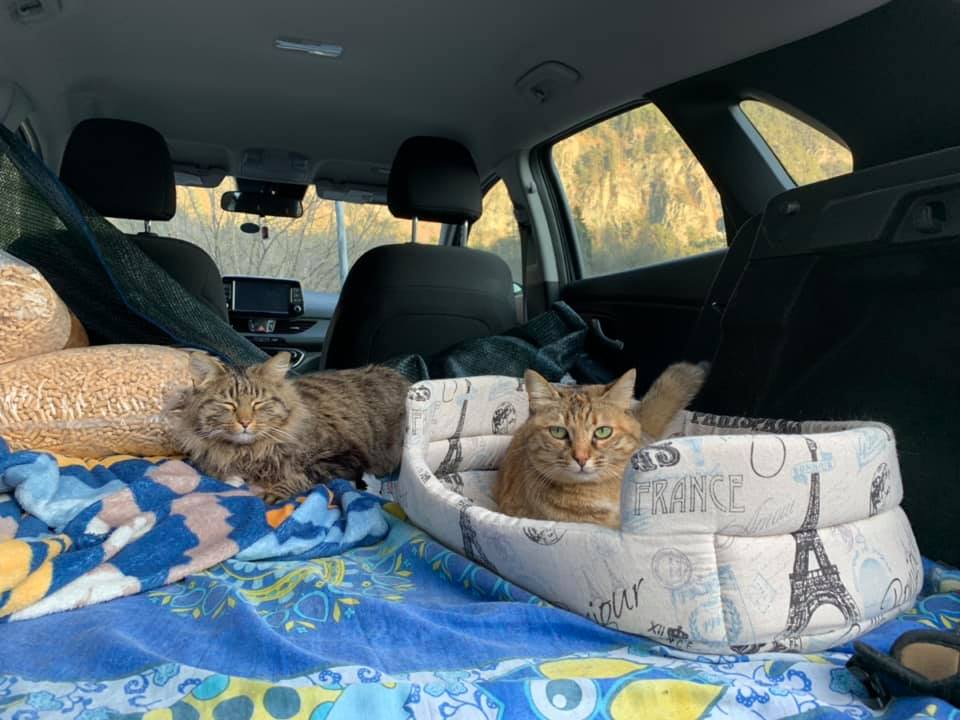
Choosing the Right Travel Carrier
Ensuring the carrier is spacious
When it comes to choosing a travel carrier for your cat, it’s important to prioritize spaciousness. Your feline friend should have enough room to move around comfortably, stand up, stretch, and lie down. A cramped carrier can cause stress and discomfort, making the journey more difficult for your cat. Make sure to select a carrier that allows your cat to travel comfortably and provides enough space for them to feel at ease.
Opting for a secure and well-ventilated carrier
Safety should be a top priority when choosing a travel carrier for your cat. Look for a carrier that is secure and sturdy, with latches or locks that will prevent accidental escape. Additionally, ensure that the carrier has proper ventilation to ensure a steady flow of fresh air for your cat. Good ventilation will help keep your cat calm and comfortable throughout the journey.
Considering the material and durability of the carrier
The material and durability of the carrier are also important factors to consider. Opt for a carrier made from high-quality, easy-to-clean materials that will withstand the rigors of travel. A carrier with a removable and washable lining is ideal, as accidents can happen during the journey. Investing in a durable carrier will ensure that it lasts for many trips to come and provides a safe and comfortable environment for your cat.
Preparing Your Cat for the Trip
Consulting with a veterinarian
Before embarking on a long-distance trip with your cat, it is crucial to consult with a veterinarian. They will be able to provide important guidance and ensure that your cat is healthy and fit for travel. The veterinarian can also advise on any necessary vaccinations or preventive medications for the journey. This consultation will help ensure that your cat is in the best possible condition for the trip and minimize any potential health risks.
Introducing your cat to the carrier
Getting your cat comfortable with the carrier is essential for a stress-free journey. Introduce the carrier well in advance of your trip by leaving it out in a familiar and accessible area. Encourage your cat to explore the carrier by placing treats or toys inside. Gradually increase the amount of time your cat spends in the carrier, using positive reinforcement and rewards to create a positive association. This gradual introduction will help your cat feel more at ease and less anxious when it’s time to travel.
Getting your cat used to the car
It’s important for your cat to become accustomed to the car before embarking on a long-distance trip. Start by taking short car rides with your cat, gradually increasing the duration as they become more comfortable. Provide a familiar and comfortable space within the car, such as a familiar blanket or bedding, and ensure proper ventilation. Using treats and praise, create positive experiences for your cat in the car to help build their confidence and reduce anxiety.
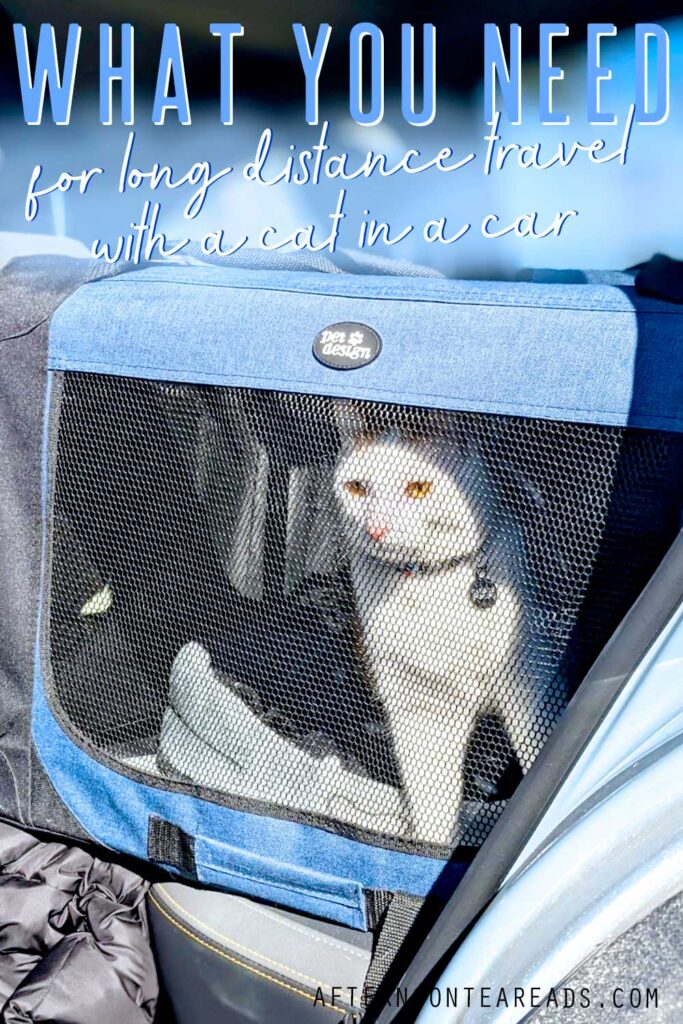
Planning Your Trip and Accommodations
Researching pet-friendly hotels and accommodations
Planning ahead is crucial when traveling with your cat. Research and identify pet-friendly hotels and accommodations along your route to ensure a comfortable stay for both you and your feline companion. Look for facilities that offer cat-friendly amenities such as designated pet areas or rooms with special accommodations for cats. Additionally, inquire about any pet policies or restrictions to avoid any surprises upon arrival.
Considering the duration of the trip
The duration of your trip will impact how you plan and prepare for your cat’s needs. Longer trips may require more frequent rest stops and opportunities for your cat to stretch their legs and use the litter box. Take this into consideration when plotting your itinerary. It’s important to find a balance between reaching your destination in a timely manner and providing adequate breaks for your cat’s well-being.
Preparing a travel itinerary
Creating a travel itinerary will help ensure a smooth journey with your cat. Plan your travel route, considering the availability of pet-friendly rest stops and attractions along the way. Allow for sufficient time to rest, eat, and care for your cat’s needs. Having a well-thought-out itinerary will help reduce stress and allow you to fully enjoy the journey with your furry friend.
Packing Essentials for Your Cat
Bringing enough food and water for the journey
Pack enough food and water for your cat to last the duration of the trip, plus a little extra in case of delays. Stick to your cat’s regular diet to avoid any digestive issues. Portable food and water bowls are perfect for travel and will make it easier to provide your cat with meals and hydration along the way. Remember to pack water from home or ensure access to clean water sources during rest stops.
Carrying necessary medications and medical records
If your cat requires medication, make sure to pack an ample supply for the entire journey. Keep medications in their original packaging to ensure accurate dosing instructions and to have the necessary information handy. Additionally, bring copies of your cat’s medical records, including vaccination records, in case of emergency or if you need to visit a veterinarian during your trip. Being prepared will give you peace of mind and ensure your cat’s health and well-being.
Packing your cat’s favorite toys and comfort items
To keep your cat entertained and comforted during the journey, don’t forget to pack their favorite toys and comfort items. Familiar scents and objects can help reduce anxiety and provide a sense of security for your cat. Whether it’s a beloved stuffed animal or a cozy blanket, these items will make the carrier feel more like home and help keep your cat calm and content during the trip.
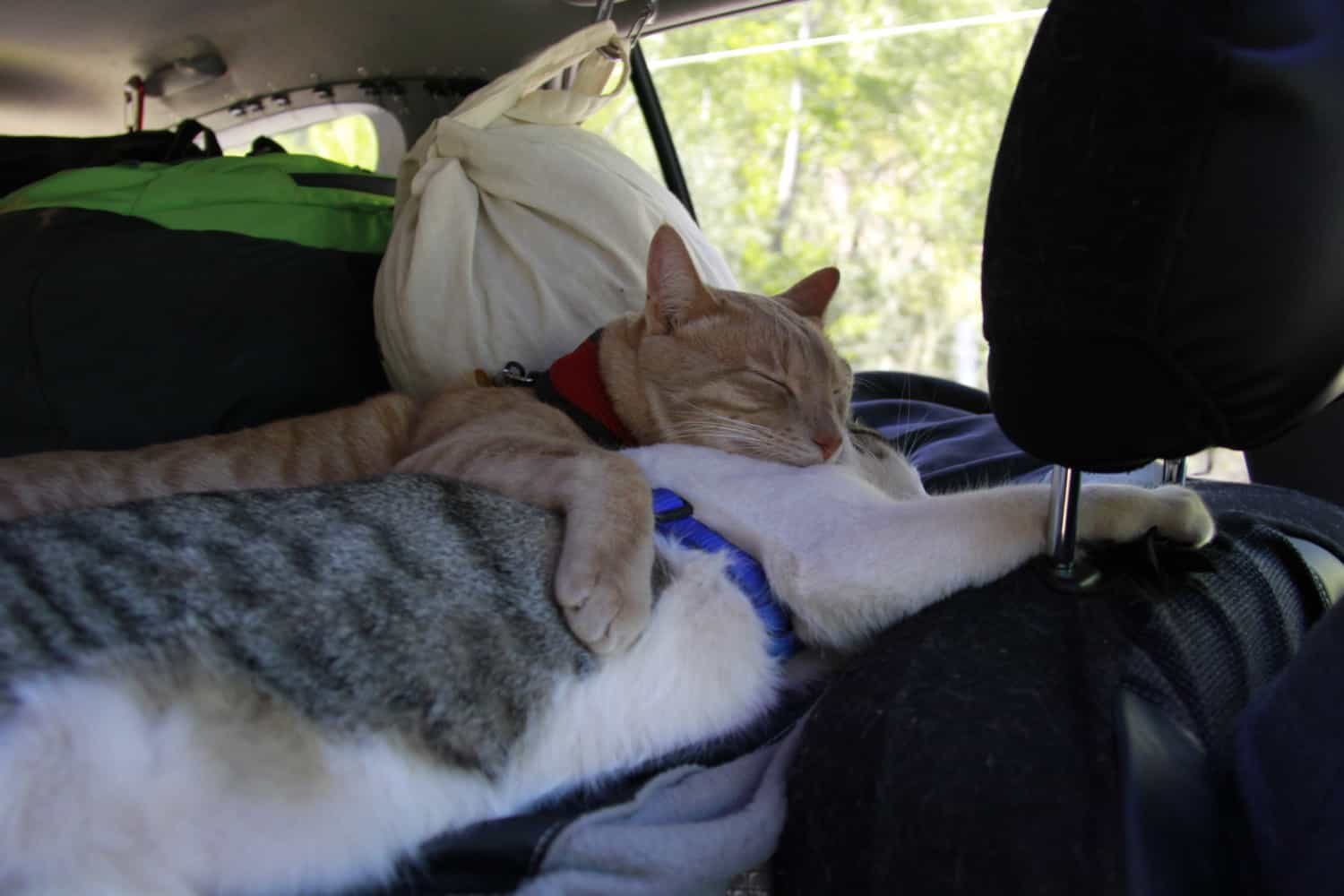
Ensuring a Comfortable Journey
Creating a comfortable space within the carrier
Inside the carrier, create a comfortable space for your cat to relax during the journey. Line the bottom with a soft, washable blanket or bedding that your cat is familiar with. Consider placing a small, elevated sleeping platform or cushioned pad to provide an extra level of comfort. Ensure there is enough room for your cat to move around and stretch comfortably. The more comfortable your cat feels in the carrier, the less anxious they will be during the trip.
Choosing the right spot in the car for the carrier
Selecting the right spot in the car for the carrier is crucial for your cat’s comfort and safety. Place the carrier on a stable surface, such as the floor of the back seat or in the footwell area, secured with a seatbelt or straps to prevent it from sliding or tipping over during the journey. Avoid placing the carrier in direct sunlight or near windows, as excessive heat can cause discomfort for your cat. Finding the ideal spot will ensure a smooth and pleasant ride for your cat.
Maintaining a quiet and calm environment
Creating a calm and quiet environment within the car is essential for your cat’s comfort and well-being. Reduce external noise by closing windows and playing soothing music at a low volume. Minimize sudden movements and loud conversations to avoid startling your cat. By providing a serene and stress-free atmosphere, you will help your cat feel secure and enjoy a more relaxed journey.
Safety Measures During the Trip
Never leaving your cat unattended in the car
It is crucial to never leave your cat unattended in the car, especially during hot weather. Even with cracked windows, the temperature inside a parked car can rise rapidly, leading to heatstroke or even death. If you need to make a stop where your cat cannot accompany you, ensure someone stays with them or find a pet-friendly establishment where they can wait safely. Always prioritize the safety and well-being of your cat.
Securing the carrier properly
Properly securing the carrier within the car is essential to prevent it from moving or tipping over during sudden stops or turns. Use a seatbelt or secure the carrier with straps to keep it in place. This will ensure that your cat remains safe and comfortable throughout the journey. Avoid placing the carrier on the front seat, as airbags can be dangerous for your cat in the event of an accident.
Using a harness or leash while outside the car
When taking breaks or walking your cat outside the car during rest stops, it is important to use a harness or leash to prevent escapes and ensure your cat’s safety. Even the most well-behaved cats can become frightened or disoriented in unfamiliar surroundings. By using a harness or leash, you can allow your cat to stretch their legs while maintaining control and preventing them from getting lost or injured.
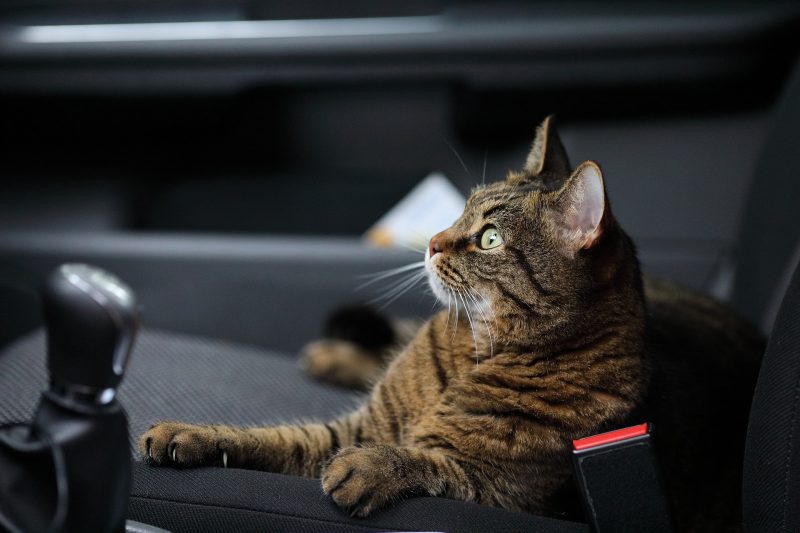
Feeding and Hydrating Your Cat
Providing regular meals according to your cat’s schedule
During the journey, try to stick to your cat’s regular feeding schedule as much as possible. Provide meals at the same time and in the same quantities as you would at home. This will provide a sense of routine and familiarity for your cat, helping them feel more comfortable during the trip. If you need to adjust feeding times due to travel constraints, do so gradually to avoid upsetting your cat’s digestive system.
Offering water at regular intervals
Hydration is crucial for your cat’s well-being, especially during a long-distance trip. Offer water to your cat at regular intervals, ensuring they have access to clean and fresh water throughout the journey. Portable water bowls or water bottles designed specifically for pets are convenient options for providing water on the go. Take advantage of rest stops to offer your cat water and encourage them to drink to prevent dehydration.
Avoiding overfeeding during the journey
While it is essential to keep your cat well-fed and hydrated during the journey, it is equally important to avoid overfeeding. Overfeeding can lead to digestive issues, discomfort, or even motion sickness for your cat. Stick to regular portion sizes and avoid offering excessive treats during the trip. If your cat experiences motion sickness, consult with your veterinarian for advice on how to manage it effectively.
Managing Your Cat’s Bathroom Needs
Bringing a portable litter box and litter
To ensure your cat’s comfort and hygiene during travel, bring a portable litter box and enough litter to last the duration of the trip. Portable litter boxes are compact and easy to set up, providing a designated spot for your cat to relieve themselves. Choose a litter that your cat is familiar with, as sudden changes in litter type can be stressful. Proper and timely access to a litter box will minimize accidents and allow your cat to maintain their bathroom routine.
Making frequent restroom stops
Just as humans need restroom breaks during long trips, cats also need opportunities to relieve themselves. Plan regular rest stops where you can provide your cat with the chance to use the litter box, stretch their legs, and get some fresh air. These breaks will help your cat feel more comfortable and reduce any potential stress caused by needing to hold their bladder or bowel movements for an extended period.
Cleaning up accidents promptly
Accidents can happen during the journey, especially if your cat becomes anxious or disoriented. It’s important to clean up any accidents promptly to ensure a clean and odor-free environment for your cat. Pack cleaning supplies such as pet-safe odor and stain removers, disposable gloves, and absorbent paper towels to address any accidents that may occur. Prompt cleanup will help minimize stress and maintain a comfortable space for your cat.
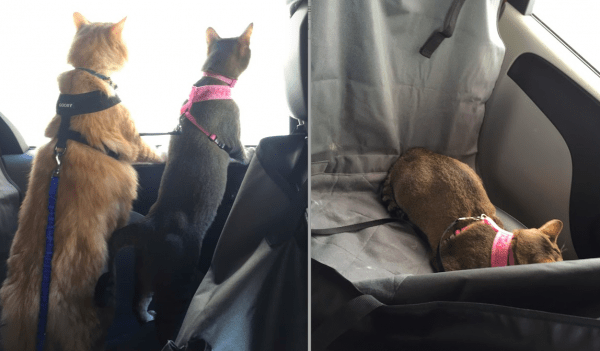
Dealing with Anxiety and Stress
Using calming aids and sprays
If your cat experiences anxiety or stress while traveling, consider using calming aids and sprays to help them relax. There are various products available specifically designed to calm nervous cats, such as pheromone sprays and natural calming remedies. Consult with your veterinarian for recommendations and advice on the suitable options for your cat’s needs. Using calming aids can help create a soothing environment and promote a sense of tranquility for your feline companion.
Playing soothing music during the journey
Soothing music can have a remarkable effect on reducing anxiety and stress in cats. Create a playlist of calming tunes and play it during the journey to help create a serene atmosphere for your cat. Choose soft melodies or classical music, as loud or upbeat music may have the opposite effect. Playing gentle music will help drown out external noises, providing a soothing and comforting backdrop for your cat throughout the trip.
Lavender scents and pheromone sprays
Lavender scents and pheromone sprays can have a calming effect on cats, helping to reduce anxiety and stress. These scents can be added to the carrier or sprayed in the car to create a relaxing environment for your cat. However, it’s important to ensure that your cat is not sensitive or allergic to these scents. Test a small amount before using them and consult with your veterinarian for any concerns or potential risks.
Ensuring Safety at Rest Stops
Ensuring the rest stop area is secure
When making rest stops, it is crucial to ensure the area is secure and safe for your cat. Look for designated pet areas or quiet corners away from busy traffic or potential hazards. Check for any potential escape routes or gaps in fencing or barriers. Prioritize the safety of your cat by selecting rest stops that provide a secure and controlled environment.
Leashing or harnessing your cat
To prevent escapes and ensure your cat’s safety, always use a leash or harness when outside the car during rest stops. Even if your cat is usually well-behaved and obedient, unfamiliar surroundings can cause them to become frightened or disoriented. Keep your cat on a leash or harness at all times to avoid accidents or them getting lost. This will allow your cat to explore and stretch safely while giving you peace of mind.
Keeping your cat away from busy areas
Avoid busy areas or locations with heavy foot traffic during your cat’s rest stops. High levels of activity and noise can be overwhelming and stressful for your cat. Look for quieter areas where your cat can relax, have a stretch, and use the litter box in peace. Minimizing exposure to busy areas will help keep your cat calm and ensure their safety during rest stops.
Traveling with your cat on a long-distance trip can be a rewarding experience with the right preparation and considerations. By choosing a spacious and secure carrier, preparing your cat for the journey, planning your trip and accommodations, packing essentials, and ensuring a comfortable and safe environment, you can make the journey enjoyable for both you and your feline companion. With proper care, attention, and precautions, your cat will feel safe, comfortable, and ready for adventure!
